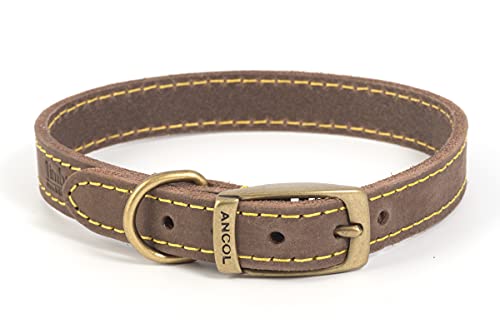When it comes to dog training, many pet owners tend to overlook the importance of choosing the right collar. While there are numerous types of collars on the market, not all of them are created equal. The right collar can make all the difference in your dog’s ability to learn and adapt. In this article, we’ll explore the types of collars that are best for training and what you should look for when selecting the best one for your furry companion.
The Benefits of Using a Training Collar
Training collars can be a valuable tool for pet owners trying to train their dogs. They allow you to communicate with your dog in a more efficient and effective way than other training methods. For instance, a gentle tug on a training collar can indicate to your dog when they are doing something wrong or right, and can help correct negative behaviors. Additionally, many training collars come in handy during leash training, allowing your pet to learn how to walk alongside you without pulling on the leash.
The Different Types of Training Collars
There are several types of training collars available, each with their own unique features and benefits. These include:
- Flat Collars: These are the most common type of dog collars, and are typically used for everyday wear. Despite their lack of extra features, flat collars can still be utilized for training purposes.
- Martingale Collars: Martingale collars, also known as limited slip collars, are designed to tighten under pressure on your dog’s neck. These collars are a great option for dogs who tend to escape from traditional collars, but may not be as effective for training purposes.
- Prong Collars: Despite their appearance, prong collars are not as harsh as they may seem. The prongs are designed to apply gentle pressure to the dog’s neck, and are often used in obedience training. However, because they require a certain level of skill to use properly, it’s recommended that you work with a professional trainer when using a prong collar.
- Head Collars: Head collars wrap around your dog’s muzzle, allowing you to control your dog’s head movements. This can be beneficial during training, but may not be the best option for all dogs, especially those who are not used to having their muzzles restrained.
- E-Collars: Electronic collars deliver a mild shock or vibration to your dog’s neck, which can be used to discourage negative behaviors or reinforce positive actions. While e-collars are effective for training, they are controversial and should only be used under the guidance of a professional trainer.
Choosing the Right Collar for Your Dog
When selecting a training collar for your dog, there are several factors you should take into consideration:
- Size: Make sure you choose a collar that fits your dog properly. A collar that is too tight can cause discomfort, while a collar that’s too loose can be easily slipped out of.
- Training Goals: What specific behaviors are you trying to correct? Some collars may be more effective than others depending on what you’re trying to achieve.
- Comfort: Of course, you want to choose a collar that’s comfortable for your pet. Look for collars made from soft, durable materials that won’t irritate your dog’s skin.
- Training Experience: If you’re new to training, it may not be a good idea to use a more advanced collar like an e-collar or prong collar. Instead, start with a simpler collar and work your way up as you gain more experience.
- Consult a Professional: Finally, it’s always a good idea to consult with a professional dog trainer or veterinarian before selecting a training collar. They can help guide you in the right direction and ensure that you’re using the collar safely and effectively.
Overall, the best training collar for your dog will depend on your pet’s specific needs and your training goals. While there are many options available, it’s important to choose a collar that’s safe, comfortable, and effective for both you and your furry companion. By following these tips and working with a professional trainer or veterinarian, you can select the perfect collar to help your dog learn and grow.






